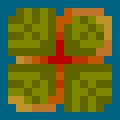I chose Debian 12 as a solid and stable base. Which of these shipped DEs is the best for this particular laptop series and Windows 10 like user experience?
GNOME 43, KDE Plasma 5.27, LXDE 11, LXQt 1.2.0, MATE 1.26, Xfce 4.18
Don’t know the exact laptop model and year, but here are some specs: IdeaPad, only HDD, DVD drive, shipped with Win 8 or 10 (I think), unbearably slow on Win 10 currently
Use case: office, web, movies (not streaming), things for non-tech-savvy users
Personally, I’m using Arch btw with KDE Plasma 6 on Wayland, so I would prefer this over other DEs, but Debian still ships version 5. Has anyone experience with performance on an old Lenovo laptop with any of the listed environments?
Whatever you choose, make sure you’re familiar with it since you’ll be the one that has to fix everything that’s wrong. 🙂
I suggest not giving their user sudo rights and having your own user with sudo rights for installing apps, doing upgrades and so on.
It will be very useful to have SSH installed if you need to assist them remotely.
If you want to help remotely I also recommend Tailscale, it creates a “mesh VPN” private network where your PC and their laptop can see each other over an encrypted connection that can also break out of ISP NAT (no port forwards needed). Since it’s encrypted it’s ok to use simple unencrypted VNC to view their desktop to help when needed.
I can give some pointers if you have a home server and want them to be able to use web apps on it over Tailscale. One very useful example is Syncthing, which can sync files between a folder on the laptop and your server, where you can back it up further incrementally with Borg Backup or whatever you use. You can sync their entire home directory if you want or you can just have a ~/Sync dir where they put only what they want.
Last but not least, if you can swap the HDD consider putting in a SSD instead, the difference will be night and day.
I suggest not giving their user sudo rights and having your own user with sudo rights for installing apps, doing upgrades and so on.
Yes but upgrades should be automatic and not require any privilege escalation. There is nothing privileged about keeping your system up to date. Same for flatpaks.
With a
--userrepo (in the flathub install command) you can let them install and uninstall their apps without any privileges, only to their user. Otherwise with a system repo they need to be in theflatpakgroup.It will be very useful to have SSH installed if you need to assist them remotely.
That didnt age well ;D
and yes complex stuff like Tailscale is needed as the only good VNC apps for Wayland dont have builtin servers for connecting without an IP (like RealVNC, TeamViewer or RustDesk have).
Using NoIP could be an easy solution too though.
Syncthing has versioning, I wouldnt even put servers in the game. Just backup their home to one of your machines (if that is okay for them).
Replace the HDD with SSD. It will run faster. You can configure any DE to look similar to windows, maybe Gnome to the lesser extend. One think to keep in mind when choosing the distro, you have to support it. Good luck.
This. It will perform better than when it was new. Pop in some extra RAM while you’re at it as it’s probably dirt cheap.
As far as DE, Gnome and Cinnamon are closest to Windows IMO. Nothing wrong with KDE, but it’s not as simplified.
GNOME is basically nothing like Windows, in fact KDE Plasma is much closer. Cinnamon isn’t in OP’s list of DEs, though it should be available as a pre-installed option for Debian based on what I see in their live ISO list. At that point, it would probably be better to go with Linux Mint though, given the target user. I assume OP would have their reasons for choosing Debian over Mint if they wanted to use Cinnamon, though.
Gnome’s ui is a couple of extensions away from being windows-like. You don’t need to subscribe to the full gnome experience™ to use gnome.
Linux Mint Debian Edition. Very windows-like + automatic updates = ideal for people who don’t really want to have to learn anything new (assuming your parents are like mine in that respect).
Linux mint doesnt update automatically, does it? It warns about them, but you need to press “okay”.
You have to enable it, but once you do it can do them automatically.
You can setup unattended-updates to handle most of those.
Yes that would do it. But I wonder if that would silence Mints update notices. These would be redundant and should be disabled/removed.
Gnome won’t break. If you don’t want them calling you up in the middle of a work day saying, “why did the bar at the bottom of the screen disappear!?” or “Berny, my screen turned black!”, install Gnome
Yes but on GNOME you dont even have a bar at the bottom. GNOME Classic may suit here, or using Dash-to-panel which is very well maintained but may break.
For casual users I typically recommend using Cinnamon Desktop, it’s the most Windows-esque UI and will be the easiest for them to pick up and use.
I roll with Cinnamon on Ubuntu and it’s been extremely painless, very simple to get stuff do and shit just works.
I was going to recommend the same: what I love about Cinnamon is the fact that has less theming and customization features (compared to other DEs).
While this might seem bad for experienced users, it is perfect for new people: I don’t want my dad to call me on a saturday morning because he accidentally erased the menu button or things like that
The Plasma desktop is well supported and is pretty close to a Windows experience.
I hate Gnome with passion because it’s nothing like Windows. I tested Ubuntu 2009 and the Gnome DE is what made me not like Linux. I did not know at the time that KDE Plasma also existed
In 2009 gnome was still windows-like IMO. It’s gnome shell that flipped the script.
The wierd app drawer was still a thing and a few other things I really didn’t like. Canonical was giving away copies to try at Dreamhack Summer. I remember it very well
One word of warning about Debian, you may be already aware of this: resist the urge to add remote apt repos that replace packages that are provided by Debian (same package name).
It’s ok if the packages are named differently even if they do the same thing, as long as they don’t pretend to be the same package. One good example of this is the Docker repo, which gives their own packages different names from the Docker packages on Debian.
If the repo overwrites native packages you will eventually end up with dependency relations which cannot be solved by apt anymore (most often happens when you remove a 3rd party repo). This usually comes back to bite you after a couple of years when it’s time to upgrade to the new Debian release – and you can’t.
aptitude can sometimes figure out a way to straighten things out but it can involve uninstalling/reinstalling and then upgrading a huge amount of packages which is never fun.
Also never add repos of some newer or different Debian version, that can make that effect even worse.
If they’re used to Windows, then KDE Plasma would be the better option IMO. If you feel it’s too slow on an old laptop, then you can try Cinnamon or XFCE.
Cinnamon. Whenever I try something different I always come back. Stable, reliable, similar to Windows, but without all the unnecessary improvements.
Agreed. Putting plasma on your parents PC seems like a recipe to get calls like “I’ve accidentally removed my taskbar and I don’t know how to put it back!”
A system with a billion customisation options and the ability to really mess up your UX in just a couple of clicks is a blessing for power users and a curse for 70 year old Keith whose last PC was a Vista-era Compaq.
Cinnamon gives you a simple, easy to understand Windows UX, with far less room to go wrong.
I highly recommend fedora kinoite for people who don’t want to do maintenance or don’t know how.
It being immutable makes updates incredibly easy, and makes it much harder to break the system, and kde is best for people who are familiar with windows.
I can’t recommend KDE for people who aren’t comfortable with computers as there are so many settings they can get into without knowing how to get it back the way it was.
GNOME with Dash to Panel is usually good enough for those used to Windows’ layout, and you can set them up with Silverblue to get the same immutability.
Gnome addons break nearly every version upgrade, so, I wouldn’t recommend dash to panel, and the problem of settings they can get into is actually mitigated by kinoites snapshotting.
No KDE settings are all done in the homedir, there is nothing snapshotted here
Dash to panel gets updated long before Gnome typically hits stable. Especially on Debian like OP mentions.
Err, KDE at least gives people the option to configure their system how they want.
GNOME takes those options away, so if you don’t like what they have then you’re stuck.
GNOME with Dash to Panel
Yeah, it also requires a lot of 3rd party addons to achieve basic functionality. Laymen shouldn’t have to search for these, and they also shouldn’t have to deal with them when they inevitably break.
Gnome hasn’t been for normal users since Gnome2. That’s when they started doing things “the gnome way” instead of just what’s pragmatic.
Whoa, that’s a lot of comments. Thanks for your suggestions, guys. I will think about this.
Debian still ships version 5
Debian ships 5.27.5 - it’s not just not updating often, but it’s not shipping bugfix releases (latest 5.27 version is 5.27.11!). I recommend to avoid it and maybe look at KUbuntu LTS instead
Disclaimer I am on Fedora Kinoite with soon Plasma 6 too.
Staying in an older Fedora Kinoite version will spare you from the breaking changes. Like currently 38 instead of 39. I would use ublue kinoite-main. You can disable animations, baloo etc. and have a very minimal experience. (Kinoite is way lighter than Fedora KDE and doesnt even include Gwenview, Okular or Kate)
Have a look at EndlessOS. Easy Desktop, immutable Debian base afaik. VanillaOS also has a Debian variant.
Immutable stable Distros are really needed. But I think Fedoras rpm-ostree is currently better, because it uses a git-like approach. I also think it is overcomplex and moves too slowly, so I imagine something may surpass it.
Automatic upgrades like traditional distros are not enough (they only annoy users but dont really apply them), you need really automatic ones.
Ublue has ublue-update on some editions, which is really nice. Fedora wants to implement some half baked solution I guess. If your Grandparents are always at home and on power that is no problem though (metered networks, low battery, AC connected).
Edit: EndlessOS is the immutable Debian distro, not ElementaryOS.
I would suggest go with LMDE. It is based on Debian 12 with latest Cinnamon DE. It would be resemble with Windows 90% of the time.
I chose KDE for my parent, because I know it well (I might have gone with cinnamon otherwise). It has paid off - every time they call me with a problem, I can immediately direct them to the solution without having to look anything up. Had to switch back to X11 though, because zoom was somewhat unreliable on wayland.
I think MATE is the best balance between lighter weight and ease of use.
Mate doesnt bundle in a ton of dependencies like KDE or even GNOME, but RAM usage between KDE, XFCE, MATE, Budgie etc. is pretty similar









